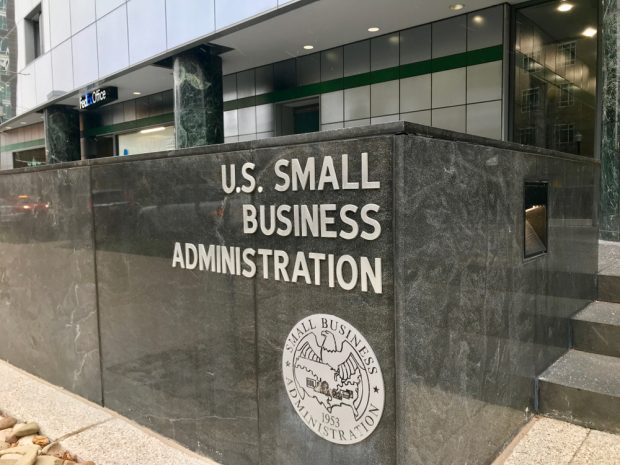 Small Business Administration headquarters building entrance (Image: Shutterstock).
Small Business Administration headquarters building entrance (Image: Shutterstock).
The Small Business Administration failed to inform Paycheck Protection Program borrowers that they would not have a portion of their loan forgiven if they also received an economic injury loan advance from the administration — an omission that has caused shock among PPP borrowers, financial trade groups charged Monday.
In a letter to congressional leaders, the trade groups, including CUNA, NAFCU, the American Bankers Association and the Independent Community Bankers of America, asked Congress to immediately fix the problem.
Recommended For You
"Lenders we represent are seeing first hand the spreading awareness, shock and resentment among borrowers who believe they were deceived about the nature of the [emergency advance]," the groups said.
The issue emerged on the same day that the SBA's Inspector General released another report alleging that poor controls in the PPP program has led to thousands of ineligible businesses receiving loans.
The financial groups said that many small businesses applied for and received SBA Economic Injury Disaster Loan Advances directly from the agency.
Many of those same businesses then applied for PPP loans from banks and credit unions, the groups said.
When lenders processed those loans, they did not know whether a business also applied for an emergency grant because the programs operate independently. The SBA indicated in April that the emergency payments would be treated as grants.
Then, according to the groups, the SBA reversed its guidance to say that the forgiven amount of a PPP loan must be reduced by the amount of any emergency grant a business received.
That effectively transformed a significant portion of a grant into a loan, the groups charged.
"Whether intentionally or as a result of confusing communications, PPP borrowers were misled and are only now beginning to discover the truth of their situation, the groups said. "Even today, many borrowers remain unaware of the debt burden they will soon face."
The situation also caused problems for lenders who suddenly found themselves having the unforgiven part of a PPP loan on their balance sheets.
"The EIDL Advance debt trap could not come at a worse time," the groups said in asking Congress to correct the problem.
The letter came on the same day that the SBA's Inspector General released a report on the agency's most difficult management issues.
On the PPP, the IG reported that:
- As of Oct. 1, the SBA had not initiated loan reviews because agency officials had not completed the process to be used.
- Thousands of PPP loans have gone to ineligible borrowers.
- Tens of thousands of approved and disbursed loans were made for amounts that exceeded a borrower's maximum amount
- Tens of thousands of loans were made to borrowers on a government "Do Not Pay" list.
- Hundreds of businesses having more than 500 employees — the maximum allowed — still received PPP loans.
- Thousands of businesses that were started after Feb. 15 may have received PPP loans even though they were ineligible.
© Touchpoint Markets, All Rights Reserved. Request academic re-use from www.copyright.com. All other uses, submit a request to [email protected]. For more inforrmation visit Asset & Logo Licensing.






